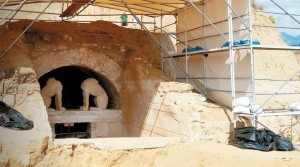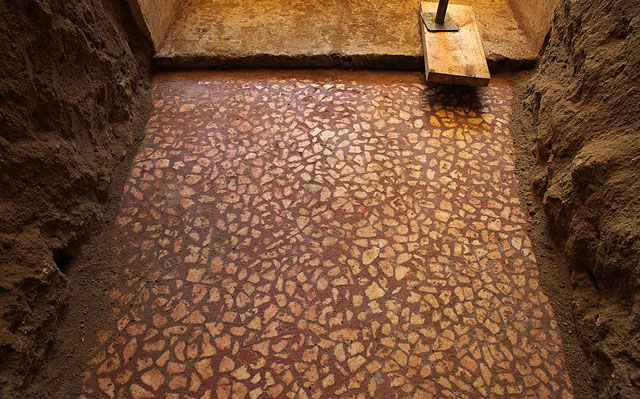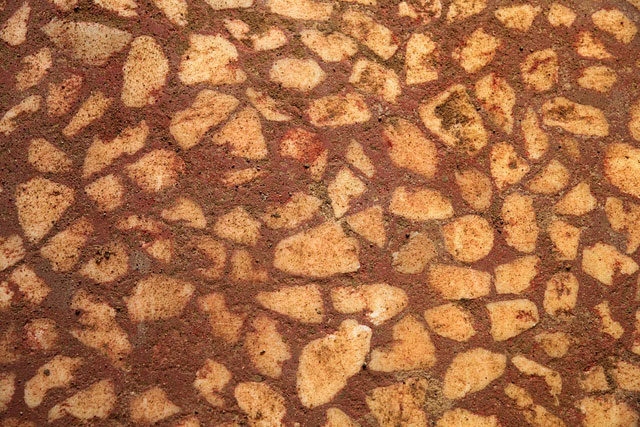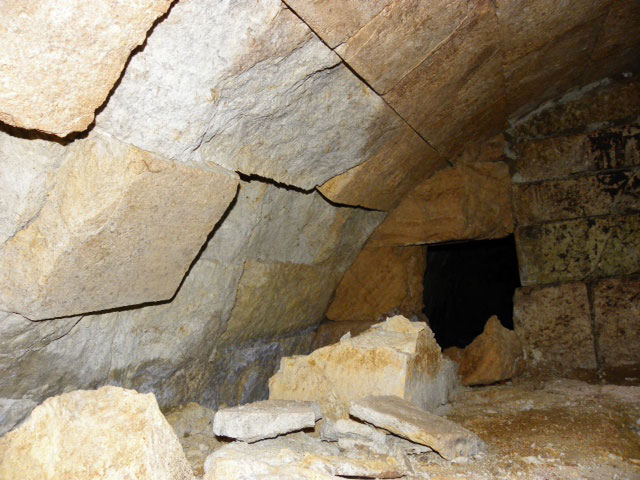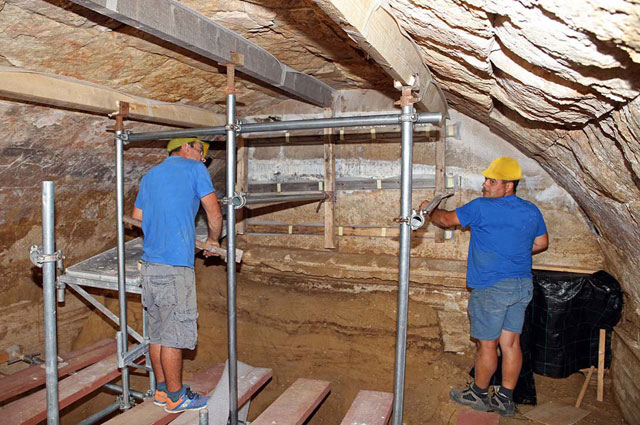An announcement issued by the Ministry of Culture on Sunday revealed that a wealth of new finds are gradually being uncovered at excavations taking place at Ancient Amphipolis.
A section of the floor, made of irregular pieces of white marble on a red background, were uncovered at the antechamber behind the wall as well as the remains of a fresco with traces of blue coloring on the first diaphragmatic wall behind the sphinxes.
The three chambers discovered behind the sealing wall were created with diaphragmatic walls and filled with loose sand up to the height of the dome at the time when the tomb was sealed up. The diaphragmatic walls also aided in the support of the structure.
There were gaps in the diaphragmatic walls that could have been caused by the removal of stones or failure to insert stones, but these appear to be a part of the tomb’s sealing.
So far, the first diaphragmatic wall behind the entrance has been revealed up to the Ionic architrave. It is decorated with eight-petalled roses, but the western section is missing.
The entrance leading to the next area of the monument will be revealed once the earth has been removed.
Excavation work is continuing to protect the monument from unexpected weather conditions and to dig grooves to help guide the rainwater away from the monument. Archaeologists’ priority is to protect the site from the winter weather while also working to structurally support the tomb as debris is being removed.
Speculation – Plundered or not?
Speculation regarding the identity of the person that the tomb was created for is being replaced by speculation as to whether the tomb has been plundered. Archaeologists are divided. Those who think it is plundered point to the condition of the sphinx guards and the fact that the Lion of Amphipolis that stood at the top of the mound had been removed. Archaeologists who refute these claims state that the tomb had a number of safety precautions sealing the entrance that must have protected it from grave robbers.
What we know so far –
Ask me anything
Explore related questions
